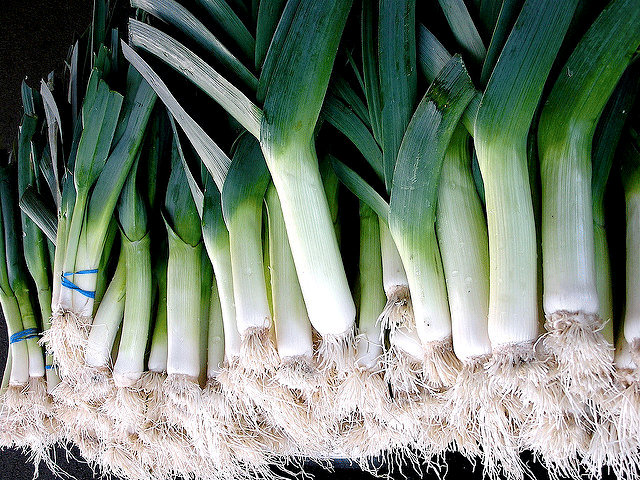Like other members of the Allium family, leeks have been a popular vegetable for hundreds of years, especially in winter months when other home-grown vegetables are scarce. They are an easy-to-grow, robust crop with hardy varieties for winter and early types for late summer, the latter being tall and slim, whilst hardy leek varieties are usually more stocky in size or have bluer-green foliage; there are also mid-season varieties available. Leeks require a long growing season in order to enable them to mature sufficiently, yet young, pencil-slim leeks can be enjoyed as a delicious late spring vegetable in their own right if space is more restricted. Leeks can be raised from seed or from ready-grown seedlings.
Quick potted guide
CONTAINER Suitable for all containers with a minimum depth of 18 cm (6 in).
PLANT From seed in early to mid spring. Buy seedlings for planting out in late spring and summer.
POSITION Open position.
SOIL Fertile, non-acid compost; good drainage.
HARVEST Early autumn to winter, depending on variety.
Planting and siting
- Because leeks need a long growing season, start them as early in the season as possible. You will need two outdoor containers. Make a drill about 1 cm (½ in) deep in any outdoor container in late March, when the compost is workable and warm enough to permit germination, and sow the leek seeds thinly.
- When the seedlings are about 10 cm (4 in) tall, they are ready for transplantation to your chosen container. Carefully remove from the growing container and trim the tops and roots down.
- Using a dibber, make holes 10 cm (4 in) deep and 15 cm (6 in) apart – closer if you want small, thin leeks – in the compost of your final container. Drop the young leeks into the holes.
- Do not replace any compost, simply fill with water, allowing the compost to naturally settle around the roots. Planting holes will fill naturally over time.
- For ready-grown seedlings, follow steps 1 to 3.
Maintenance
- Keep the containers free from weeds.
- Make sure the leeks are kept watered during dry weather.
- As the plants develop, gradually draw compost up the lower stems in order to keep them white.
Possible problems
- Generally trouble-free, however, leeks can be susceptible to any of the problems affecting the Allium family.
Harvesting, storing and freezing
Leeks are best harvested before they get too large, when they are about 2 cm (¾ in) thick is ideal. If you begin picking them when they are still quite small, this will help to extend the season. Using a trowel or small garden hand fork, carefully ease the leeks out of the container by loosening the compost around them to avoid breaking them as you pull them out. Leeks can be stored outside in compost and then lifted throughout winter as they are needed. To do this, half-fill a deep pot with compost, lift the leeks and lay them against one side of the pot. Cover the roots and white stems with more compost and pack down gently. Take out the leeks and use when required.
For freezing, slice off the root, cut off the tops of the leaves and remove any tough or damaged outer leaves. Slice down the stem halfway through and prize open. Rinse under cold running water to flush out any trapped compost. Shake well to remove excess water. Cut into 2.5 cm (1 in) lengths. Blanch for 2 minutes, cool and dry well. Pack into rigid containers or freezer bags. Store for up to 12 months. Leeks are quite soft and watery once they have been frozen, so it is a good idea to use the thawing liquid in your recipe for extra flavour.


